Which came first the graphic novel, chapter book, or streaming movie? We’re reading something that surprised us as to which property came first and it clarified why certain things are made. Most of the time when I read a graphic novel with a known previous release vehicle, it’s because the story has proved to be so popular that it logically translates to something different. Spy School is mglit that was like that. The books are awesome, and while I didn’t really care for the graphic novel, I understand why it was made. I’m sure that Bunnicula will be like that for some people. That’s a book that was first published in 1979 as an early reader chapter book, became an animated television show, spawned a couple of literary follow-ups, and is now a graphic novel. What a long, strange trip it’s been.
Bunnicula: The Graphic Novel is a dark, paranoid tale about an evil that’s lurking in the home of a typical family.
Bunnicula: The Graphic Novel is a playful tale about a cat with an active imagination, a harmless rabbit, and an older dog.
Both of those statements are true, but they’re also much more when it comes to Bunnicula: The Graphic Novel and how it’s presented. My wife loved Bunnicula as a chapter book and has many fond memories of it growing up. I apparently had a very sheltered life and never read it. However, through teaching, and my wife’s introduction to it, I was familiar with the feel, vibe, and nature of Bunnicula.
It’s a difficult book and concept not to love. Those elementary ages want to be scared in an age-appropriate manner. They also love to poke fun at things that are misinterpreted and obviously silly. Bunnicula successfully melds both of those concepts into a story about Chester, a cat who maniacally creates a paranoid backstory about the family’s new pet rabbit.
Chester weaves a convincing narrative to Harold, the older and wiser dog that this new red-eyed bunny is actually out to drain their blood. It doesn’t help the pet’s story that the kids in the house have chosen to call the bouncy new animal, Bunnicula. They wanted to name the rabbit because they found him outside of the cinema when they were there to see Dracula.
As the family and the two traditional pets come to grips with their new friend strange things start happening. Chester does some online research and figures out that the rabbit is definitely there to do harm to the family. A complex net of rustic, olde European lore about castle-dwelling monsters, as well as the methods used to prevent their aggression, start making their presence known in the house. A ring of garlic appears around the sleeping rabbit. There’s a white tomato in the refrigerator and the sleeping and eating habits of the rabbit are odd, to say the least.
There’s a fabulous sense of elementary school noir going on in Bunnicula: The Graphic Novel. That sense was always there in the book, but now that it’s illustrated it really fills in the gaps and presents the story in a way that modern (see: reluctant readers) folks will embrace. Chester’s thoughts are presented in a much more regal, old-school, way that let readers know he’s on board with the insanity to a point, and then it just becomes too much.
Chester’s paranoia is priceless. From the front cover, when his ears are pinned back and his front paws are raised in an apprehensive manner it’s obvious that he’s a cat on the edge. His unease builds to a crescendo near the end of the book. While wearing a garlic necklace he envisions Bunnicula in the middle of a town square, ruling the masses as they kneel before him. The art and the pacing and the mood match up perfectly as the book’s climax hits. It’s obvious that this is lighthearted fun, but the colors and seriousness of some of the characters will make young readers wonder ‘what if?’. It’s a great all-age graphic novel that builds on the decades-long love that the book has endured.
If you’re starting with the graphic novel, that is fine. Its enjoyment is on par with the chapter book, and to an extent, it’s even more enjoyable. That’s simply due to the fact that graphic novels reach those reluctant readers who, for one reason or another, are averse to reading. Bunnicula: The Graphic Novel, is gateway reading 101. It’s a case where the movie is better than the book, or in this case, as good as the book.
Bunnicula: The Graphic Novel is by James Howe and Andrew Donkin, with illustrations by Stephen Gilpin, based on the novel by Deborah & James Howe and available on Atheneum Books for Young Readers, an imprint of Simon & Schuster Children’s Publishing.
There are affiliate links in this post.

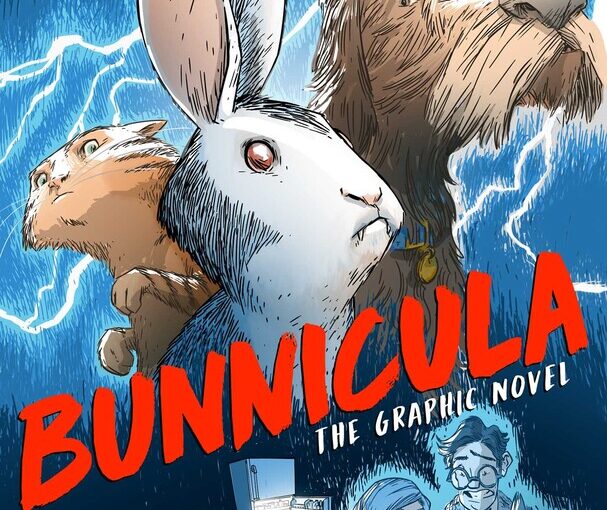
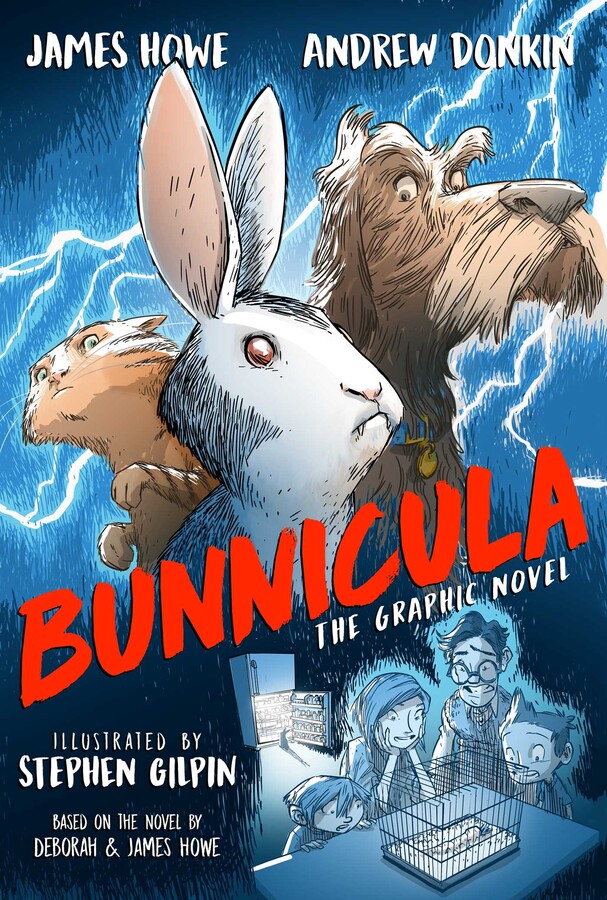
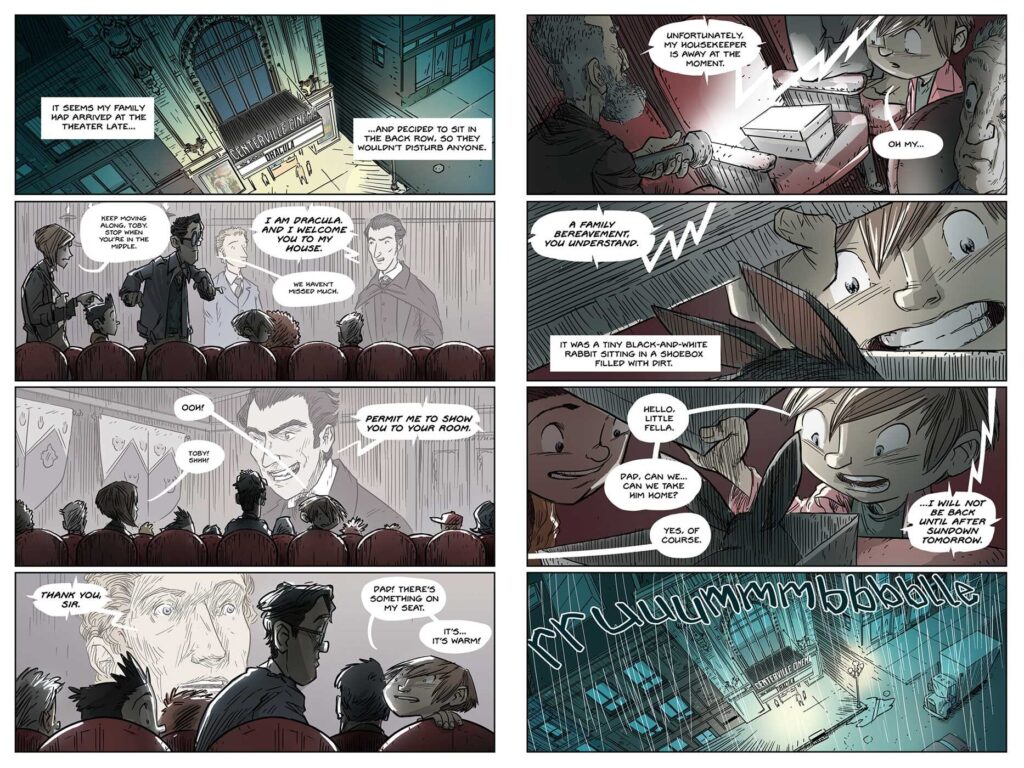
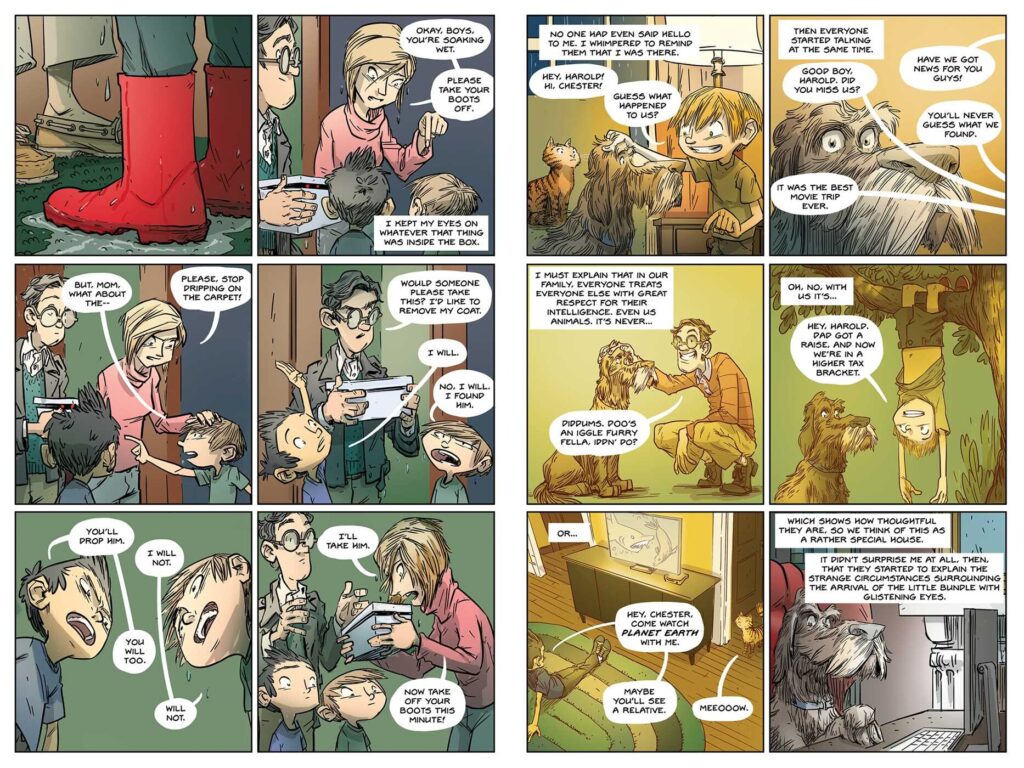
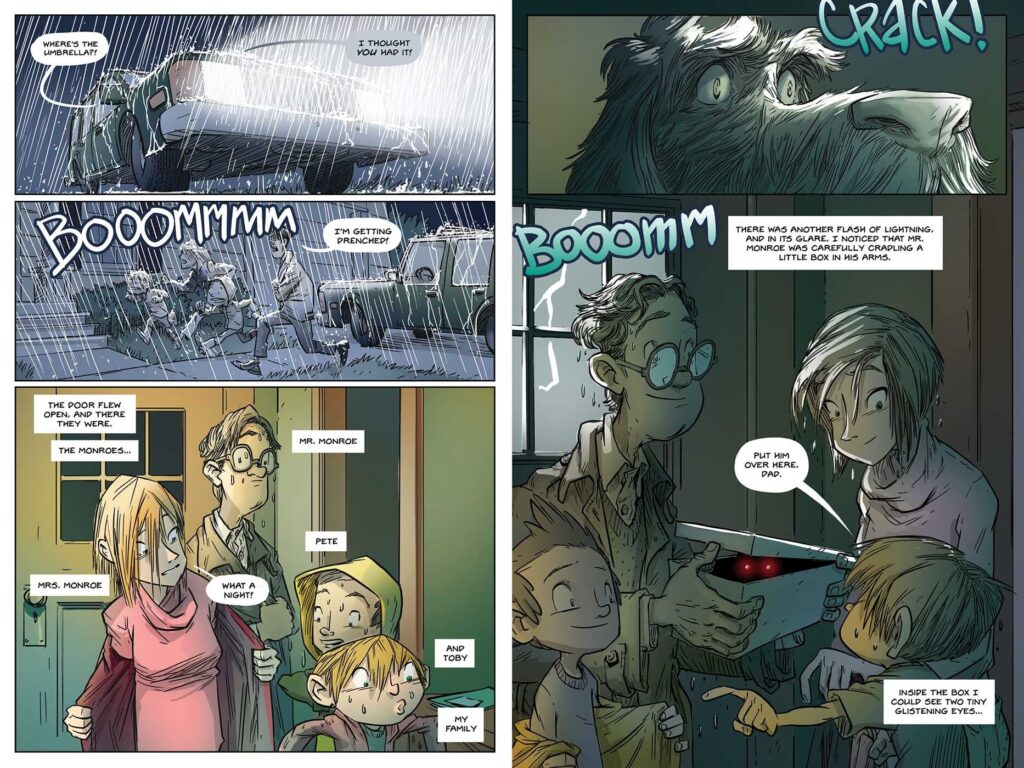



 Facebook
Facebook Twitter
Twitter Flickr
Flickr GooglePlus
GooglePlus Youtube
Youtube